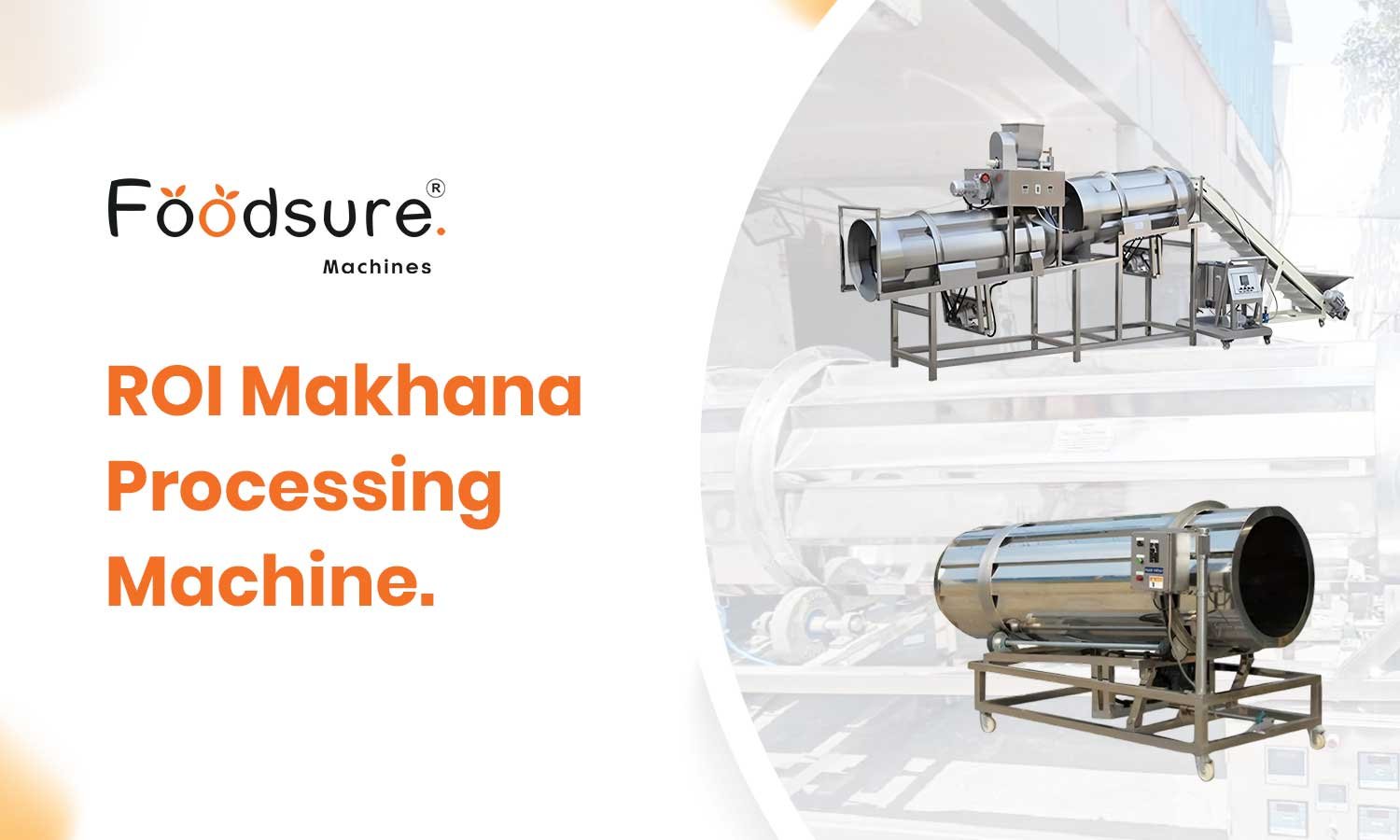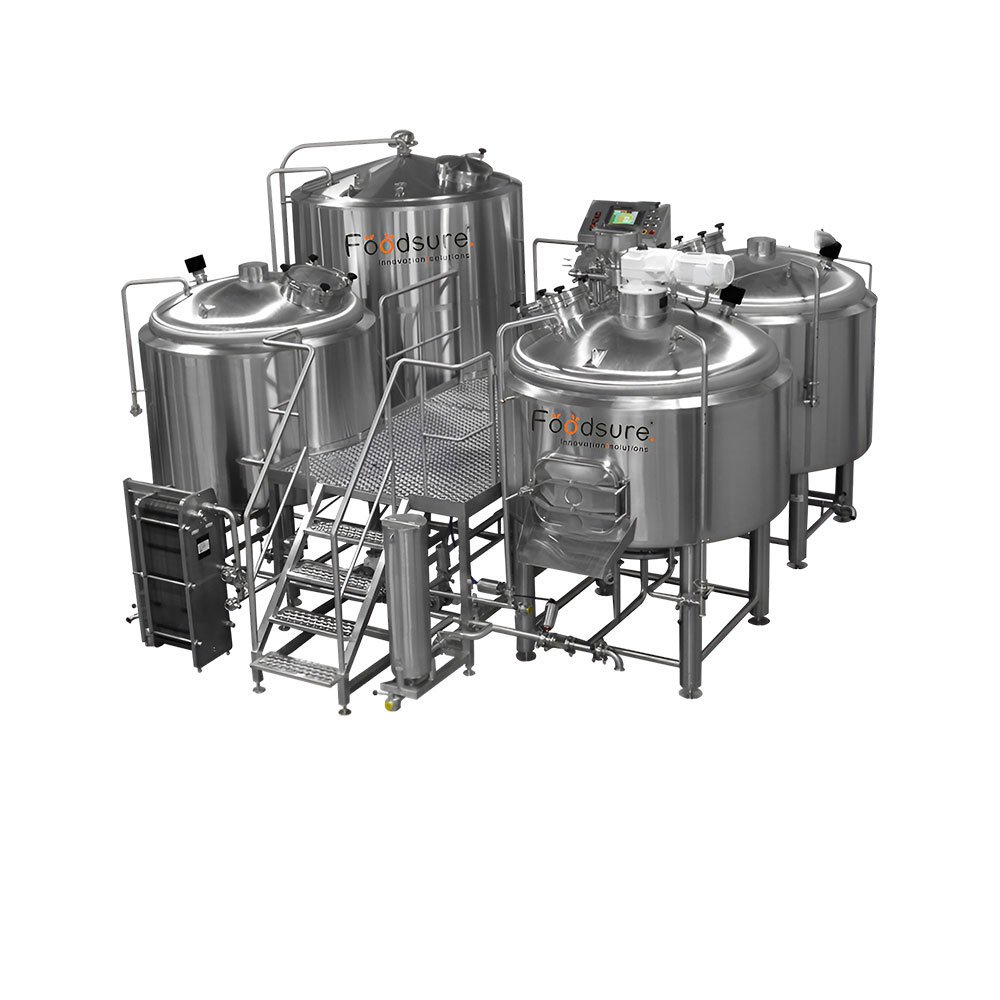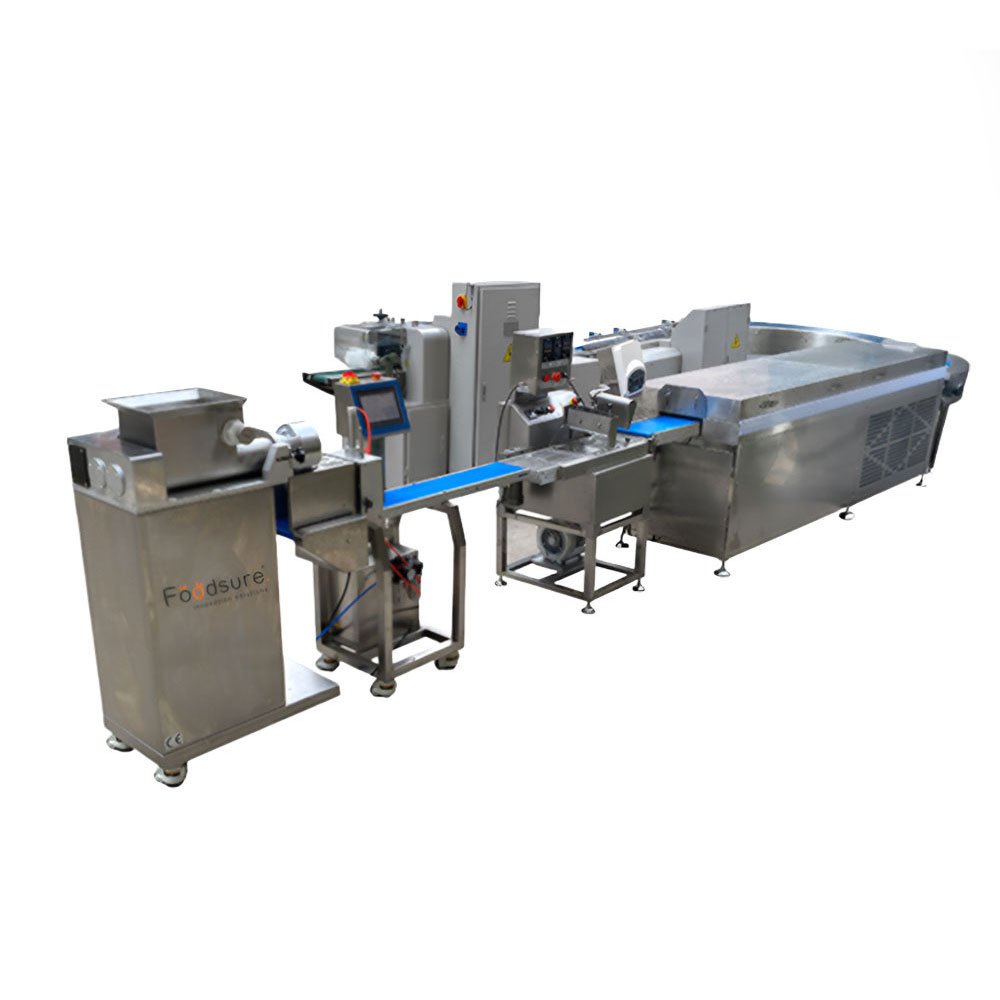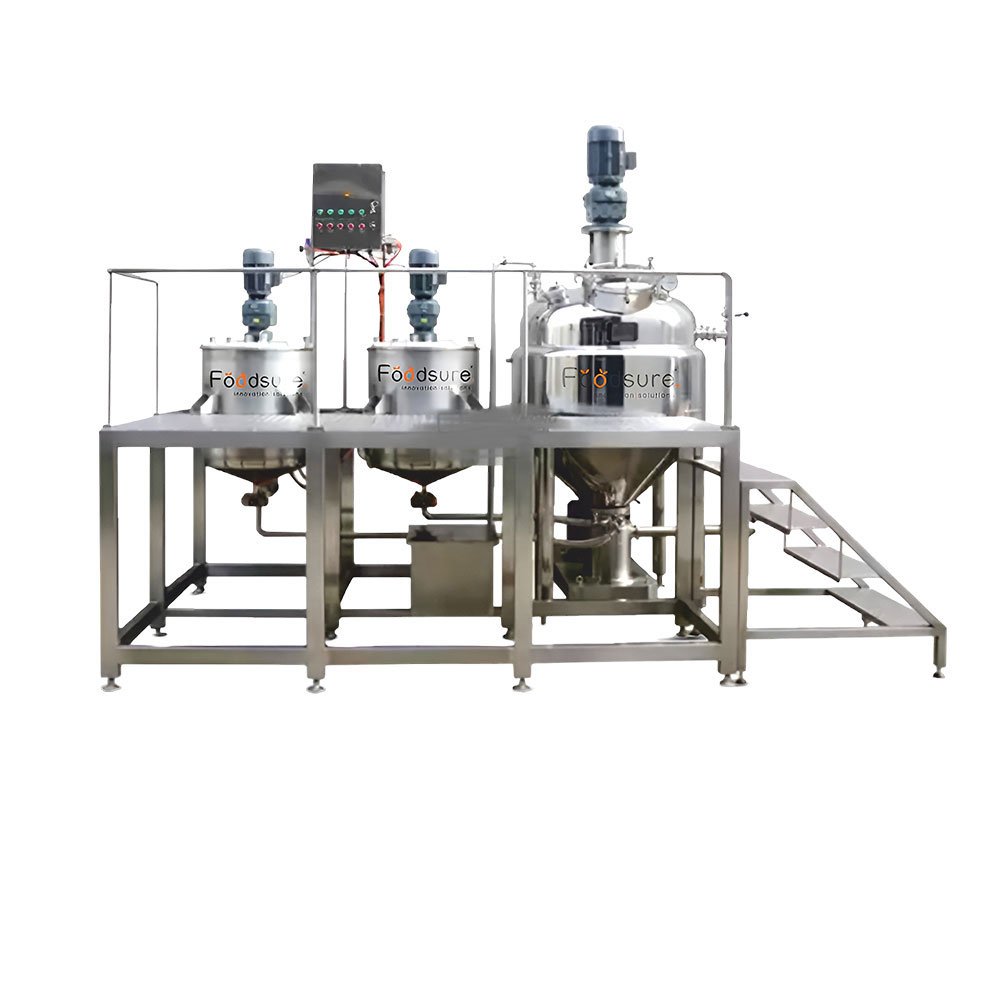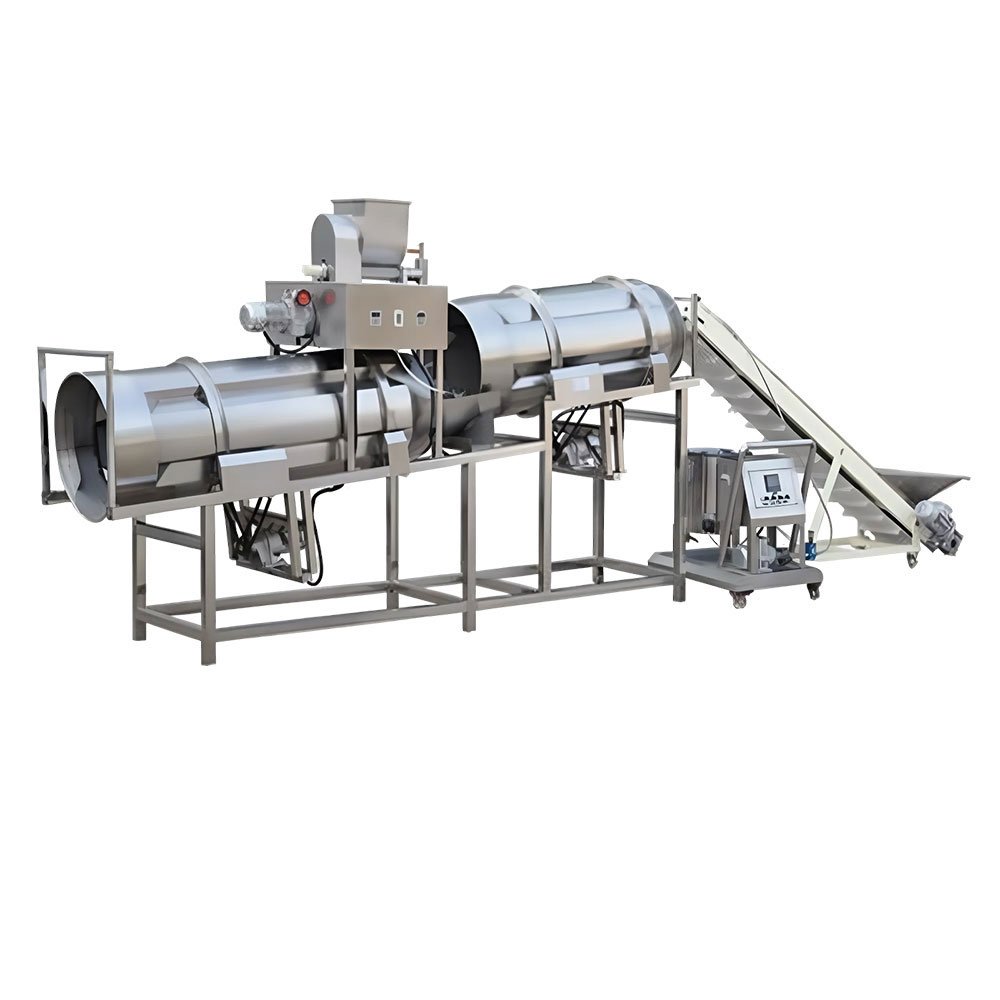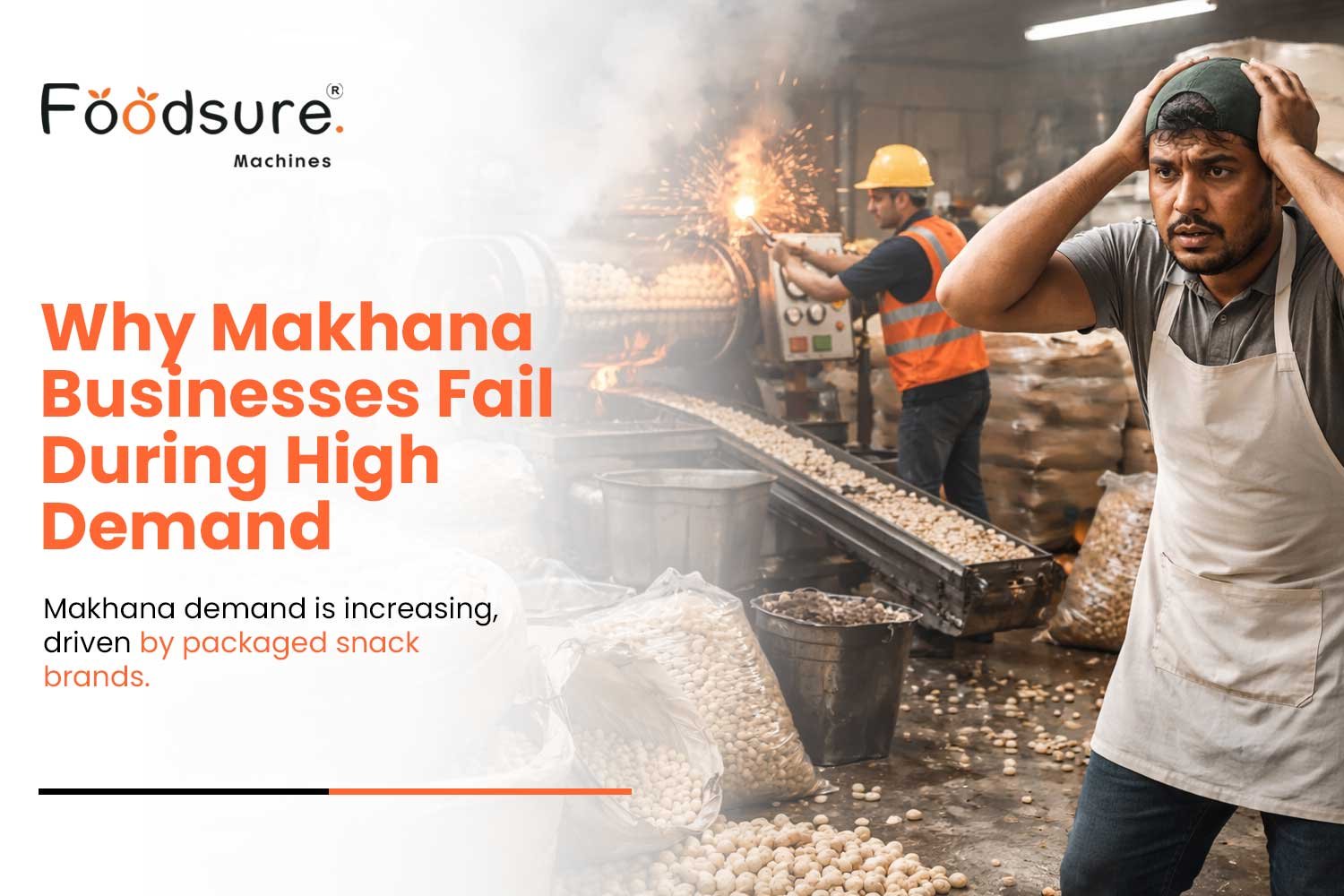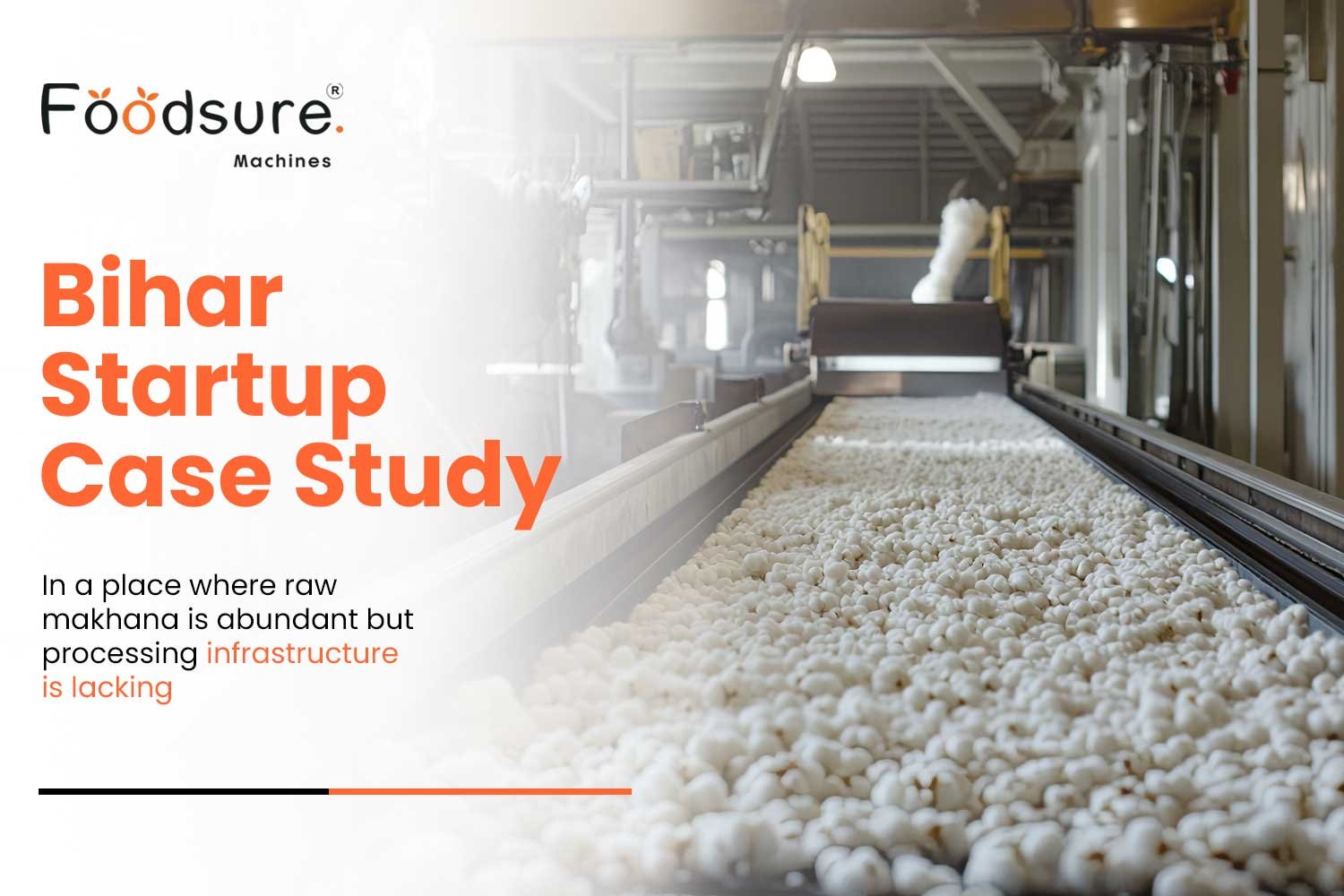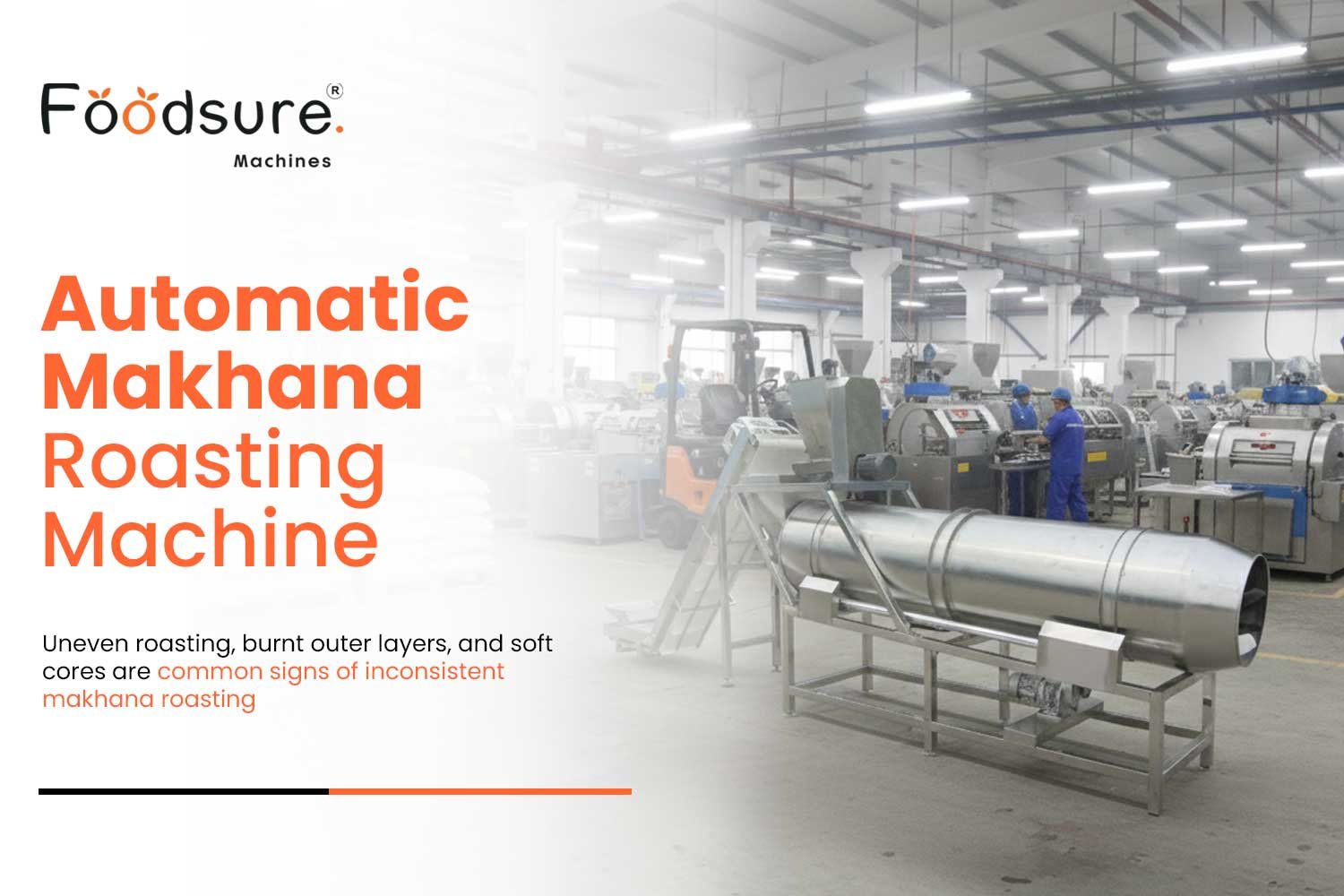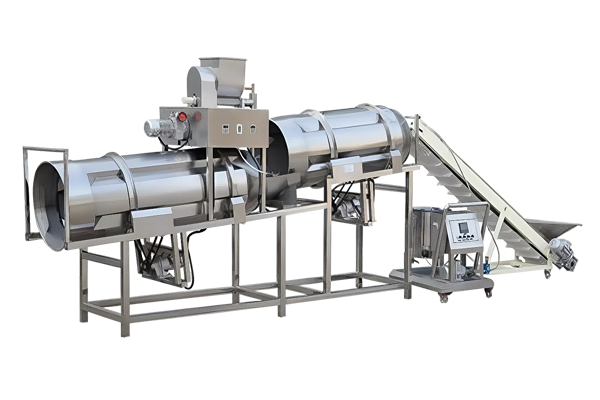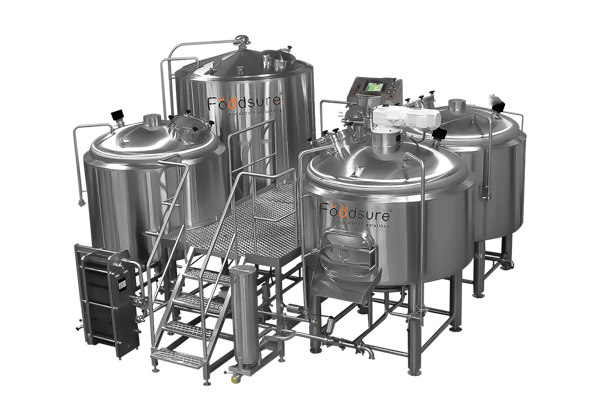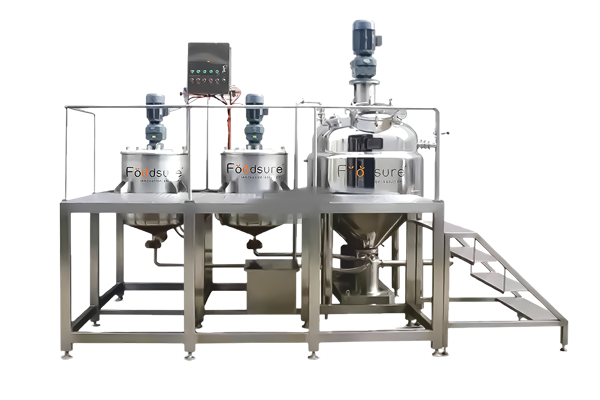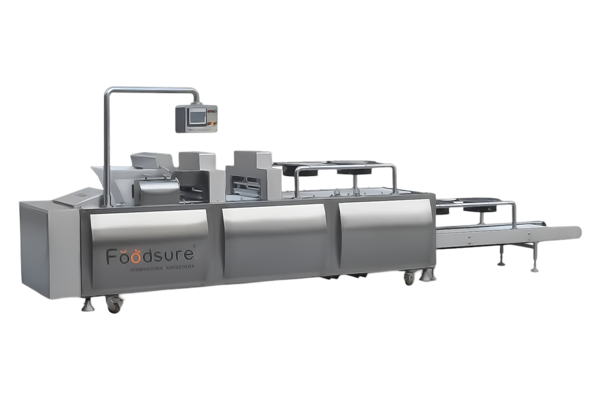Deep-cooling dryers and automated graders help rural ROI makhana processing machine units cut post-harvest losses by up to 30%. The dryers remove excess moisture quickly, even in high-humidity or erratic monsoon conditions, preventing spoilage and fungus. Graders separate wet, clumped seeds that ruin roasting quality. Together, they speed up drying, improve consistency, and increase market value. For village processors, that means less waste, better quality, and stronger profits, especially when the weather doesn’t cooperate.
The Hidden Profit Loss in Village Makhana Units — Data Breakdown
- Up to 30% post-harvest loss in village makhana units, mainly from poor drying during erratic monsoons.
- Excess moisture leads to fungal spoilage, turning viable seeds into waste.
- Manual drying losses average ₹2,575 per batch, due to labor inefficiencies and inconsistent results.
- 10–15% of batches get rejected or downgraded from wet clumping and grading errors, hurting final sale prices.
Looking for reliable options? Here’s our curated list of Top Makhana Machine Manufacturers in India, trusted by FPOs and rural startups.
Where Your Makhana ROI Vanishes: Top Loss Points in Village Processing
Most village units don’t see the real cost of manual makhana processing until the losses pile up. From spoilage to rejected batches, the drain is silent but reliable. Let’s break down where the real damage happens and how the right machines fix it.
-
Moisture Overload = Fungal Loss
Erratic monsoons slow down drying, giving fungi time to ruin your makhana. Delayed drying alone can wipe out up to 13% of your harvest’s value. Fast, uniform drying with a proper makhana dryer machine stops that rot before it starts and helps you hold onto both weight and price.
-
Inconsistent Grading = Broken Pricing Chain
When grading is manual, quality varies. Clumping and size mix-ups mean 10–15% of batches get rejected or undervalued. The best makhana grading machines in India solve this by sorting accurately. Protect the popping quality, and help your pricing stay consistent all the way to the buyer.
-
Manual Handling = Time + Labour Waste
Old-school drying and sorting waste costs more than ₹2,500 per 100 kg, not counting the time lost. Makhana dryer machine cuts drying time sharply, reduces labor costs, and helps you reach the market faster with better margins to show for it.
How Deep-Cooling Makhana Machines Fix Each Profit Leak in Rural Processing
Monsoon patterns are no longer predictable, and that uncertainty hits small processors the hardest. But here’s the thing: the makhana processing plant setup in India can help you take back control. Let’s break down how the right ROI makhana processing machine protects your makhana yield when the weather doesn’t.
-
Rapid Moisture Removal
Automatic makhana dryer for rural units processes 50–500 kg batches and brings moisture below 10% within hours. This speed is crucial during monsoons when humidity risks fungal growth and spoilage.
-
Consistent Roasting
Makhana processing plant setup in India with precision roasters, digital temperature controls that distribute heat evenly, even with wet makhana. You get consistent popping and fewer burnt or under-roasted kernels.
-
Accurate Grading
Best makhana grading machine in India, vibratory or rotary, sort by size, cut clumping, and reduce rejection rates. That means better pricing and more market-ready output.
-
Shelf-Life Protection
Village-level makhana machinery setup, heat sealing, and vacuum packaging keep moisture out after drying. No reabsorption, no quality loss, just longer shelf life and fewer returns.
-
Energy Efficiency + Local Fit
These ROI makhana processing machine run on LPG, diesel, or electricity and are made with food-grade stainless steel. They scale well, adapt to rural setups, and help cut running costs.
In regions like Rajkot, deep-cooling dryers and precision graders are already helping units cut moisture loss and improve yields. See how Makhana Processing Machines in Rajkot are driving change locally.
ROI Comparison: Traditional Makhana Drying vs Deep-Cooling Setup
Before investing in any best ROI makhana processing machine setup, it helps to see the numbers clearly. Here’s a side-by-side comparison of how a typical manual setup stacks up against a deep-cooling setup when it comes to daily output, losses, labor, and profitability. Take a look:
| Parameter | Manual Setup | Deep-Cooling Setup |
|---|---|---|
| Daily Output | 100 kg | 150 kg |
| Loss % | 20% | 5% |
| Net Saleable Output/day | 80 kg (after 20% loss) | 142.5 kg (after 5% loss) |
| Profit per kg | ₹8 | ₹14 |
| Monthly Profit (25 days) | ₹16,000 | ₹49,875 |
| Yearly Profit | ₹1.92 lakh | ₹5.98 lakh |
Beyond ROI: How Better Makhana Machines Bring Predictability & Growth
Smart makhana units know that an ROI makhana processing machine isn’t just about money, it’s about control, predictability, and growth you can count on.
- Easier buyer price talks. When every batch is consistent thanks to automated drying, roasting, and grading, buyers stop questioning quality. That opens the door to longer contracts and better prices.
- More confident inventory planning. The best makhana grading machine price in India that controls moisture precisely means fewer surprises. You are not guessing what will spoil or stressing over sudden rejections. That makes forecasting a whole lot easier.
- Scaling without chaos. Monsoons or no monsoons, an automatic makhana dryer for rural units keeps things moving. You are not stuck waiting for the sun or struggling for labour. You can actually plan growth and deliver.
2021–2024 Cost Data: Manual vs Deep-Cooling Makhana Setup in Villages
Let’s cut through the theory and look at what actually happens on paper. From 2021 to 2024, one setup eats into margins with hidden losses. The other quietly compounds returns. This village-level makhana machinery setup isn’t just about saving time or effort; it’s about keeping more of what you earn, every single day.
📊 Makhana Processing Profit Projection
| Year | Setup Type | Annual Output (kg) | Sellable Output (kg) | Profit per Kg (₹) | Annual Profit (₹) | Cumulative Profit (₹) |
|---|---|---|---|---|---|---|
| 2021 | Manual | 30,000 | 24,000 | ₹8 | ₹1,92,000 | ₹1,92,000 |
| 2021 | Deep-Cooling | 45,000 | 42,750 | ₹14 | ₹5,98,500 | ₹5,98,500 |
| 2022 | Manual | 30,000 | 24,000 | ₹8 | ₹1,92,000 | ₹3,84,000 |
| 2022 | Deep-Cooling | 45,000 | 42,750 | ₹14 | ₹5,98,500 | ₹11,97,000 |
| 2023 | Manual | 30,000 | 24,000 | ₹8 | ₹1,92,000 | ₹5,76,000 |
| 2023 | Deep-Cooling | 45,000 | 42,750 | ₹14 | ₹5,98,500 | ₹17,95,500 |
| 2024 | Manual | 30,000 | 24,000 | ₹8 | ₹1,92,000 | ₹7,68,000 |
| 2024 | Deep-Cooling | 45,000 | 42,750 | ₹14 | ₹5,98,500 | ₹23,94,000 |
See the ROI difference with a 1:1 walkthrough—Book a free consult
Why Village Entrepreneurs Trust Foodsure Machines for Long-Term ROI
Foodsure Machines are built for rural makhana units that can’t afford waste. Our deep-cooling dryers pull moisture fast, so fungal damage doesn’t even get a chance to start. The graders? Consistent. They sort cleanly, batch after batch, so you are not losing margins to rejects. The real win is this: less spoilage, lower labor costs, and more makhana that’s actually worth selling. It’s about control over your quality, your pricing, and your outcomes. Want to cut your spoilage by 30% this season? Talk to a makhana setup expert today.
FAQ
Q1. How do deep-cooling dryers help reduce makhana post-harvest losses?
They pull out moisture fast even during sticky monsoon weather. That stops fungus before it starts and saves up to 30% of your harvest from going to waste. It’s a simple fix with real impact.
Q2. Why is precision grading crucial for maximizing ROI in village makhana units?
Uniform grading means fewer rejections and cleaner batches that fetch better prices. When every seed is sorted right, your product quality speaks for itself and your margins show it.
Q3. How do these machines impact labor and drying time costs?
Manual drying can take days and drain your team. With automated dryers and graders, you cut that down to hours. Less labor, faster turnaround, and lower overhead. That’s how you stay competitive.

